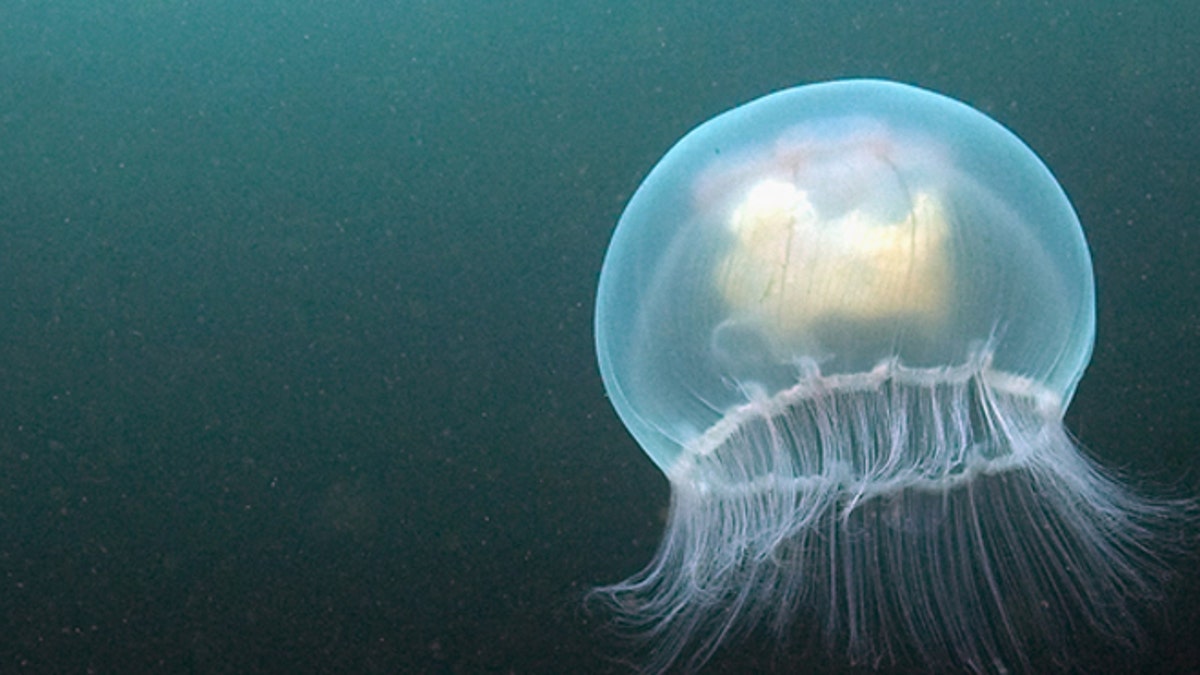
SEAHOUSES, ENGLAND - JUNE 26: A Moon jellyfish swims beneath the waters of Inner Farne on June 26, 2011 at the Farne Islands, England. The Farne Islands, which are run by the National Trust, are situated two to three miles off the Northumberland coastline. The archipeligo of 16-28 separate islands (depending on the tide) make the summer home to approximately 100,000 pairs of breeding seabirds including around 36,000 Puffins, 32,000 Guillemots and 2,000 pairs of Arctic Terns. The species of birds which nest in internationally important numbers include Shag, Sandwich Tern and Arctic Tern. The coastline around The Farnes are also the breeding ground to one of Europe's largest Grey Seal colonies with around 4,000 adults giving birth to 1500 pups every year. (Photo by Dan Kitwood/Getty Images) (2011 Getty Images)
A few divers got a shock Tuesday in the waters off Playa Majahuitas beach, Mexico, when they captured video of a rarely seen huge white jellyfish.
They said the creature they saw while diving in Puerto Vallarta's Banderas Bay was almost twice their size.
Photographer Christian Hauser and fellow divers came across the jelly, but made sure to steer clear of touching its tentacles.
Vince Levesque, Senior Aquarist at Birch Aquarium at Scripps in La Jolla, California told Fox News Latino that it's difficult to know for sure the type of jellyfish the divers saw, but he suspects it is a "fried egg" jelly or phacellophora. "It's pretty far South from where we normally see them, but it may have gotten pushed South due to winds or storms off the coast," Levesque says.
Levesque said because he's not sure exactly the type, the jelly in the video could also be a Drymonema larsoni, usually found in Florida waters. "Jellies can easily be transported in ballast water of large ships and could cross through the Panama canal in this way," he says.
Jellyfish are plankton (from the Greek word planktos, meaning to wander or drift); they’re made up of gelatinous or “jelly-like” material. There are stinging and non-stinging jellies.
"The 'fried egg' can be about 3 feet in bell height, with 25 foot long arms. They have a venomous sting, but it's not too bad. If you got entangled in one it could leave welts.
Jellyfish live less than one year, and eat phytoplankton, gopepods, fish eggs and other small fish called larvae.
They are a critical piece of the ocean ecosystem, providing food for fish and turtles and offering protection for small fish threatened by predators.





















